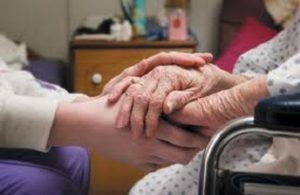
When most people think of emergency rooms, they might think of a scene out of Grey’s Anatomy. The ambulance racing to the door with paramedics jumping out as soon as the ambulance stops to get the patient on the gurney out of the back. Doctors and nurses rushing to meet the ambulance with all the staff running into the hospital to save the patient that is standing on death’s doorstep.
While scenes like this can sometimes be true, ER staff has seen an increase in elderly patients suffering from serious illness and unmanaged symptoms. Hospice and palliative care are the perfect solutions to keeping patients’ symptoms managed and keeping them at home, where most wish to be.
End of Life and the Emergency Room
Emergency Room physicians and nurses are incredible. They never know what is going to walk or roll through the ER entrance from day to day. They face serious and often unplanned injuries and illness often and must be on their toes to diagnose the issue and work to fix it.
With that being said, the emergency room is not the best place for patients who are nearing the end of life. Hear us out! Determining a patient’s longevity is difficult, even for primary care physicians who know a patient’s full medical history. It’s natural for ER physicians to steer clear of discussing a patient’s prognosis when he/she only sees the patient for a small bit of the patient’s condition. Because of this, emergency physicians often stay away from discussing end of life care with patients.
On the other hand, some patients do not have strong relationships with their primary care physician so they put a lot of trust in their ER doctor to provide the best possible education and treatment options.

Hospice & Palliative Care Support for ER Physicians
St. Anthony’s Hospice works with ER staff to provide education and end of life options for patients with serious illness. Rather than patients being admitted into the hospital, it is possible to discharge a patient from the ER to home with hospice or palliative services.
With hospice referrals from the ER, St. Anthony’s works to get one of our Admission RNs out ASAP to assess the patient for hospice eligibility and if eligible, get the admission documents signed.
If the patient is eligible for hospice, we work to get durable medical equipment in the home quickly. The patient’s nurse (or on-call nurse if patient arrives home after hours) will make a visit or call, if the patient does not have any immediate needs, once the patient is back home.
Hospice care provides many benefits to the patient, all of which are covered 100% under Medicare and Medicaid. Some private insurances also cover hospice services. Visit our hospice information page to learn more about these benefits- https://stanthonyshospice.org/hospice-care/.
If the patient is not eligible for hospice care, we discuss palliative care with the patient. Palliative care is for patients who are still seeking aggressive or curative treatments, or those who have a chronic illness but do not meet criteria for hospice care just yet. Visit our palliative care information page to learn more about palliative care- https://stanthonyshospice.org/palliative/.
The overall goals of hospice and palliative care are quality of life and keeping the patient at home and out of the hospital/ER. To learn more about St. Anthony’s Hospice and Palliative Care or to refer yourself or a loved one, give us a call at (270) 826-2326 or visit our referral page at https://stanthonyshospice.org/referral/.
1st photo source: https://media.gettyimages.com/photos/blurred-emergency-in-hospital-picture-id543076252?s=612×612
2nd photo source- google images
